Search Results for Tag: USA
UN Climate Chief on New York summit
Your Ice Blogger has been busy with the New York climate summit around the corner. I was delighted to read that Ban Ki Moon is considering a special Arctic summit and a trip on a Greenpeace Arctic mission vessel after receiving a petition to Save the Arctic. I am also hoping there will be some high-profile promises of climate action.
Meanwhile, here in Bonn, I talked to Christiana Figueres, the Executive Secretary of the UNFCCC (Climate Secretariat), which is based here in Bonn, just next door to my Deutsche Welle Office, before she left for New York.
She told me what she expects of this meeting, which is something different from the regular UN climate summits. She also told me why she was joining yesterday’s climate march.
Let me share some excerpts from the interview in writing here with you, and offer you a full length audio version of my talk to this very influential and passionate lady.
More on the climate summit and the Arctic here soon.
Excerpts from my interview with Christiana Figueres:
Ice Blogger: Why do we need yet another climate summit?
The conferences we organize once a year have the purpose of moving towards a legally based agreement, scheduled to be adopted in Paris next year. In New York, nothing is going to be negotiated. It’s very much an attempt to blow wind into the sails of the formal process. It’s about raising political will and public awareness. It is a powerful opportunity for the leaders of countries and corporations to come forward and say what each of them is going to do.
UN Secretary-General Ban Ki-moon has asked these leaders to bring bold announcements and actions to the summit. What do you expect to come out of it?
We will have a host of announcements from governments about what they are already doing and will undertake with respect to bringing down their own emissions and increasing the resilience that they need to incorporate into their planning and their infrastructure to deal with the variability and the vulnerability of climate change. From the private sector we expect the same: announcements as to how they are going to contribute to reduce emissions, either in their own operations or, even more interestingly, how they are going to be shifting their capital into low-carbon services and products to accelerate the global shift towards a low-carbon economy.
Are you expecting major announcements by the host country USA or a key player such as China?
Yes, we are expecting all countries to come forward and begin to put on the table what they will be able to contribute next year into a much more formal setting. But for that, the deadline is not until March 2015. What we expect is indications of what is possible. The fact is that most countries around the world are currently doing their homework and figuring out at a national scale what is financially, politically, economically and technically possible for them to do.
The summit is taking place in the USA, a key player in terms of emissions and a possible new climate agreement. Can hosting the summit there make a difference to US attitudes and policy?
The second term of President Obama has seen an accelerated and up-scaled engagement on climate change. The latest move of the Obama administration to ask the EPA (US Environmental Protection Agency) to come forward with regulations on power plants is probably the most ambitious action the US government has taken on climate change. We expect President Obama will be giving indications of how the United States is going to further build on those efforts. It is also very interesting that on US land, there will be the people’s climate march, just two days before the summit. That will show that there is, even in the United States, broad and deep public support for global climate policy making.
Do you think this kind of grassroots movement is what we need to take things forward?
I think it’s a very important component. I’m very grateful to the organizers of the march and to everyone who’s going to be at the march. I will be there, because it’s important to give a very strong message that it is not just the responsibility of governments or corporations, but rather there is also civil society responsibility here to make their awareness and concern felt, and encourage countries and companies to move towards low-carbon economies as soon as possible.
Some people say cities and regions should play a bigger role while governments struggle to negotiate a climate agreement?
Well it’s not an either or. Cities all around the world have already taken a very impressive lead. And we will hear from them. The mayors of hundreds of cities will be in New York, and the same goes for regions, whether it’s groups of countries or groups of municipalities. The optimization of climate action is going to come from the coherent integration of policy from the international level to the national to the local level.
Isn’t it difficult to arouse interest in an additional climate summit in the current world political situation with attention focused on conflicts in the Middle East, Ukraine and other places?
The whole week in New York will see much press attention to the summit. Not only because we will have hundreds of thousands of people on the street, not only because we will have hundreds of political leaders there, hundreds of corporations, but because they are all coming to New York for one very powerful reason. That is, climate change is now the biggest challenge that humanity has faced, certainly in this century. And there is growing awareness of this. There is already a lot of conflict around the world, around water scarcity, around migration, around food and security, and that is exacerbated by climate change. So if we want to prevent conflicts that will scale out of control, then we have to address climate change in a timely fashion.
The latest figures show greenhouse gas emissions are still rising. Scientists say the two degree target is virtually out of reach. What has to happen to bring about the kind of action we need to avert disastrous climate change?
Science has made it very clear: there is only one pathway that will allow us to stay under the maximum two degree maximum temperature increase which is the maximum temperature increase we could allow, and still maintain a more or less predictable climate for all populations around the world. So this summit and the formal processes which will occur in Peru at the end of this year and in France at the end of next year are three very important clarion calls to world leaders both public and private that time is running out. We still have the time to do it, but in order to avert the worst effects of climate change, we have to come to a global agreement by next year.
Climate talks at glacial place?
Who would have believed it? It has been a long time since the routine UN climate talks in Bonn aroused much in the way of enthusiasm. Frustration or even despair were more likely the order of the day.
Since the debacle in Copenhagen in 2009, it has been hard to stir up any kind of optimism in the climate debate. The planet is heating up, CO2 emissions are still on the increase, the ice caps are melting, storms, floods and droughts are causing huge problems even for wealthy, industrialized nations.
At the same time the UN negotiations have been slithering along at glacial pace. One upon a time, that meant very slow. But with increasing warming, even the ice giants are on the move. The sea level is rising – and maybe even the UN climate talks are sliding into motion.
A glimmer of hope from the climate sinners?
In recent years, the UN summer meetings on the banks of the Rhine were at best good to fill a hole on a news-slack day. This time, it was different. Just before the talks started, US President Barack Obama got the “snowball” rolling with his announcement he would use the Environmental Protection Agency to impose tough restrictions on emissions from coal power plants.
It’s time for innovative solutions all round. Extreme weather at home has taught America to fear climate change. Obama wants climate action to be his legacy. That can only be a good thing for all of us.
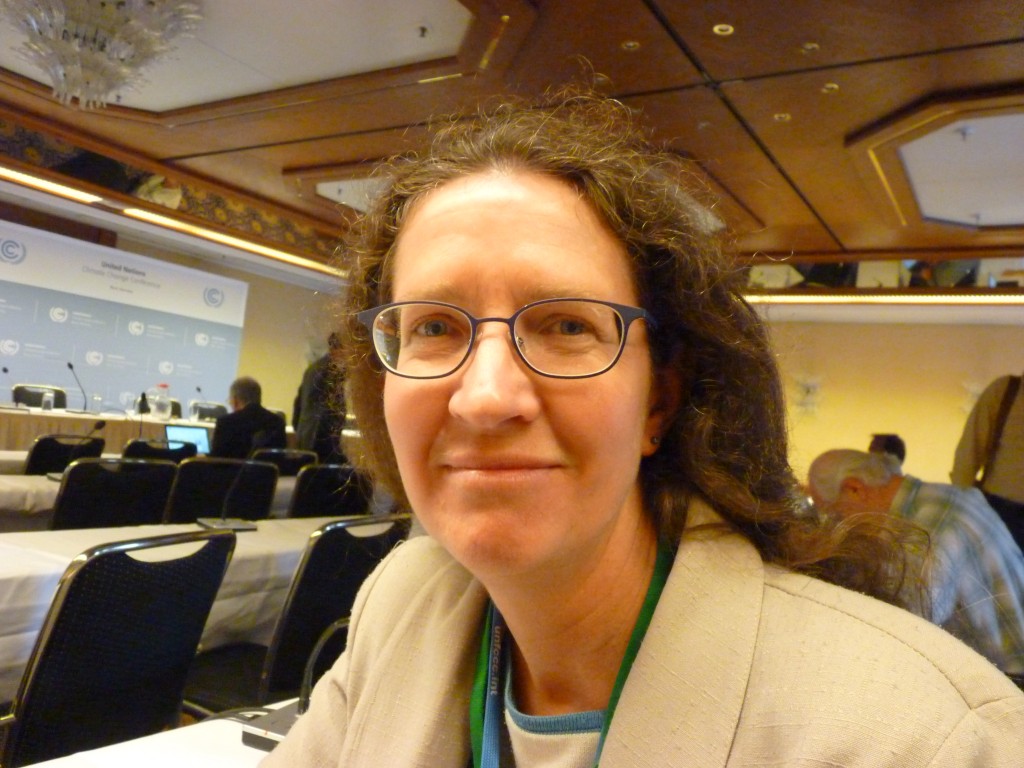
Pam Pearson, Director of the International Cryosphere Climate Initiative told me people in her home state Florida are more aware of the importance of the polar ice. (Pic: IQ)
When China then came out with the intention to cap its emissions, the world really had to sit up and take notice. Even the to-ing and fro-ing on how, why and when, or whether it was just the “personal opinion” of a high-ranking climate representative could not dampen the enthusiasm. For the first time ever, it looks as if the world’s two biggest emitters could actually be prepared to act.
Meanwhile more encouraging signs came out of India and Latin America.
Renewables on the ‘up’
At the start of the Bonn talks, a broad coalition of environment, human rights, indigenous and women’s groups demonstrated outside the conference venue for a worldwide switch to renewable energies. By the end of the talks, 60 countries had signaled support for a 100 percent switch by 2050. German Environment Minister Barbara Hendricks had to admit Germany was not making its targets right now, but would introduce new measures to reach its ambitious goal of a 40 percent emissions reduction by 2020.
If the EU could also bring itself to increase its targets and regain its old position as a climate leader, if the energy crisis caused by the Ukraine dispute could convince politicians that renewable energy is the key to energy security and independence, Europe could well be on its way to hosting a conference that will give birth to a new global agreement.
And even if the UN structures cannot move fast enough: renewable energies are on the rise. UNEP figures show more investment in renewables in the last year than in oil, coal and gas together. Even outside the UN context governments, companies and consumers are finding reason enough to reduce fossil fuel consumption. All is not yet lost for the melting icecaps. The climate snowball is gathering speed.
Polar Ice at UN Bonn Climate Talks

… And the ice continues to melt. (Pic: I. Quaile)
The delegates to the UN climate meeting currently taking place here in Bonn are receiving an urgent appeal from polar scientists to cut emissions to slow polar ice melt and give low-lying coastal regions more time to adapt to rising sea levels.
I was very interested to hear about a side-event being held here this evening, at which the authors of this year’s key studies on developments in the Antarctic will be explaining the connections between melting polar ice and climate change impacts like rising seas, affecting regions as diverse as small island states, Bangladesh or Florida in the USA.
I interviewed Anders Levermann from PIK, the Potsdam Institute for Climate Impacts Research and Pam Pearson, Director of ICCI, the International Cryosphere Climate Initiative, both in Bonn for the event.
The ICCI decided to bring the cryosphere into the Bonn talks to sensitize delegates to the dramatic developments in the Antarctic in particular, says Pearson. Ice Blog readers (and I was so delighted to hear Pam herself is one!) will remember posts earlier this year on melting in the East and West Antarctic. I also covered these in articles for DW. The shocking thing is that the Antarctic, even East Antarctica, which was until relatively recently considered so cold it had to be safe from global warming, is already being affected by climate change. The papers on the West Antarctic even described the melt trend as “irreversible”.
“We have entered an era of irreversible climate change”.
Today, Anders Levermann, author of the East Antarctic paper and one of the world’s leading Antarctic researchers, told me “we have entered a new era of climate change, witnessed the tipping of the West Antarctic ice sheet, and this is irreversible”.
That should really shock people into action, you would think. But climate negotiations are moving, as one of the experts said to me at the meeting “at a glacial pace”. As we can see in Antarctica, though, and Greenland and other regions, those glaciers are speeding up. Maybe there is hope for the climate talks yet!
The announcements by the USA and China on possible emissions cuts have brought a new “buzz” to the Bonn conference. The fact that the key emitters could finally be getting the message and preparing to move, with the impacts of climate change hitting their own countries, has to be a positive signal. Pearson confirmed to me that people in the sunshine state of Florida, where she lives, had become more aware of the importance of melting ice caps with increasing floods and storms.
As Levermann says, Antarctica and Greenland have a huge potential to raise sea level further than previously anticipated. He was lead author on the IPCC report chapter on sea level rise. The latest IPCC report factored in some of the likely impacts from melting ice in these regions for the first time. Of course the latest research was not yet included. For the 21st century forecast, this will not make a lot of difference, says Levermann. But the fact that this irreversible Antarctic melt is now underway will make a big difference to coming generations.
There are those who dispute whether the warming of the ocean, which is causing the Antarctic melt (unlike the surface melt on Greenland) is man-made. Levermann does not rule out natural variation as a possible influence. But ultimately, he says, that is irrelevant. Greenhouse gas emissions and so human interference are warming the planet, and any further warming, whatever the cause, will speed up ice melt. So cutting emissions is the way to slow it down and, Pearson adds, gives people time to adapt to rising seas.
The combination of models based on the principles of physics, using a higher resolution than ever before, and evidence from ice cores showing what happened in the past, make for a high degree of certainty about these ice developments, says Levermann.
“The level of warming will determine the rate with which we discharge West Antarctica, and we can still prevent the tipping of East Antarctica”, the cryosphere experts told us here in Bonn.
That is a huge responsibility. Here’s hoping the message will make it into the hearts and minds of those negotiating the future of the earth’s climate and the governments they represent.
Ukraine’s shadow on Arctic cooperation
When a meeting of the Senior Arctic Officials of the Arctic Council scheduled to take place in Canada in June was cancelled, one couldn’t help assuming the political standoff between Russia, on the one side, and the US and other European partners on the other over Ukraine must have played a role. The Arctic Council Secretariat, based in Tromsoe in Norway, was keen to play down any political implications. In response to my inquiry, I was told the meeting had been rescheduled in form of teleconferences and written exchanges, and various meetings of Council working groups and task forces were going ahead in the coming weeks in Canada and in other Arctic Council member states. Business as usual? When Canada, which currently holds the chair of the Arctic Council, boycotted a working meeting of the organization planned for April in Moscow, Environment Minister Leona Aglukkaq called it a “principled stand” against Russian actions in Ukraine.
On other levels, the political repercussions of the Ukraine crisis for the Arctic are undisputed. A statement from the US State Department reads:
“Given Russia’s ongoing violation of Ukraine’s sovereignty and territorial integrity, the US government has taken a number of actions, to include curtailing official government-to-government contacts and meetings with the Russian Federation on a case-by-case basis”.
And that includes Arctic-related events. In Alaska Dispatch, Yereth Rosen reports the withdrawal of State Department funding for a hazard-reduction workshop planned for June between Russian scientists and their US counterparts. He also notes the head of Russia’s emergency services failed to show up at an international meeting in the US state last month.
With the West looking to broaden sanctions against Russia because of the Ukraine dispute, relations between the two factions are bound to be strained in a region where climate change has set off a highly competitive race for oil, gas and other resources.
Defending Arctic interests
While careful to secure their own business interests, the USA plans to block exports of oil and gas technology for new projects run by Russian state-controlled companies, if the Kremlin interferes with the Presidential elections planned to take place in Ukraine on May 25th.
“Depriving Rosneft and Gazprom of the most modern technology would be a significant setback for their ambitions in the areas that are the future of the Russian industry, including the Arctic”, writes Ed Crooks in the Financial Times of May 14th.
Well before the annexation of Crimea, Moscow made no bones about its intention to defend its energy and other economic interests in the Arctic region. President Putin has made it a strategic priority, re-establishing Soviet airfields and ports and preparing a strategic military command to be set up in the Russian Arctic by the end of this year.
Territorial claims
Russia, the only non-NATO coastal Arctic state, holds more Arctic territory than any of the other seven Arctic nations. It also lays claim before the UN Commission on the Limits of the Continental Shelf to an extension of its own shelf, including the huge seabed area of the Lomonosov Ridge. Other countries that have claims on the Arctic seabed include Canada, Denmark, Norway, and the United States.
In March this year, the Commission approved Russia’s longstanding claim to 52,000 square kilometers of seabed in the Sea of Okhotsk in the Pacific Ocean, believed to be rich in oil and gas. At the time, the Russian Minister of Natural Resources and Environment Sergey Donskoy told journalists the UN decision was also “the first step in our Arctic applications, which will be ready in the near future.”
The Times Moscow correspondent Ben Hoyle responded with the headline “Russia’s legal land grab is dress rehearsal for Arctic showdown”.
A matter for NATO?
Former US Secretary of State Hillary Clinton earlier this year called for the USA and Canada to take up a united stand in response to Moscow’s military build-up in the Arctic .
According to the TTU online newsletter on defense and strategy, pressure is mounting on the Canadian prime minister Stephen Harper to abandon opposition to making the Arctic a part of NATO’s official agenda.
Harper would prefer to see the bilateral North American Aerospace Defense Command NORAD extended to forces on land and on sea. The defense experts say the Harper administration is at the same time using the Ukrainian conflict to re-gain geostrategic influence at a time where Russia is building up a strong maritime position in the Arctic.
The defense publication quotes international political risk research consultancy Polarisk Analytics however as saying extending NORAD’S powers would mean keeping up the old block mentality. That would not guarantee sufficient stability to attract private western investment in the Arctic.
Including the Arctic in NATO’s official agenda would provoke a counterproductive escalation, which could have a lasting destabilizing effect on Arctic cooperation and lead to confrontations, says Polarisk. They suggest the debate should be conducted within the Arctic Council. But so far, that has remained outside its mandate, focusing instead on environmental protection and health and safety.
Professor Lawson Brigham of the University of Alaska Fairbanks, former chairman of Arctic Council’s Arctic Marine Shipping Assessment, told Alaska Dispatch “There are enough environmental issues and enough people issues to keep us busy and keep us together”.
He said he hoped tensions would ease enough and US leaders would be “diplomatically adroit enough to pull off one of the goals articulated in White House recent Arctic Strategy implementation plan: a 2016 “Presidential Arctic Summit”, attended by heads of Arctic nations to mark the Arctic Council’s 20th anniversary.
First, let’s see how the next Arctic Council SAO meeting in Yellowknife, Canada this autumn works out. Given that the chair of the Council goes to the USA in 2015, it seems unlikely that the long shadow of the ongoing Ukrainian conflict will become shorter any time soon.
Why melting Arctic ice leaves us cold!
Since I attended a workshop on “Creating a Climate for Change” in Tromso in January, I have been thinking a lot about the psychological reasons why things are not moving forward on climate change. Although scientific knowledge is growing all the time, public perception of the need for action has not kept pace. Even in regions of the Arctic where climate change is very visible, a lot of people seem to be unwilling to take it on board. Of course there are people who will benefit to some extent. But the danger of a warming world for future generations and the environment is hard to avoid. Yet there is what you could all collective inaction. Is it all in the mind? I touched on this briefly in a post from Tromso, but feel it is important enough to come back to in some more detail here.
In connection with climate change, the word “denial” is highly emotionally charged. Her book entitled “Living in Denial: Climate Change, Emotions, and Everyday Life” brought American sociologist Kari Norgaard storms of hate mail from right-wing climate skeptics. Yet the academic from the University of Oregon is not concerned with this minority group.
“I think it is a very disingenuous debate that has been manufactured by political interests who stand to lose as the economy shifts away from fossil fuels. What they’re doing is trying to make it sound like there is a debate – but actually there is no debate”, Kari told me in an interview. What she wants to understand is why the vast majority of people who do not dispute the existence of human-induced climate change still fail to translate that knowledge into action in their own lives.
“How is it possible that we have so much knowledge about the urgency of climate change, yet when you look around, it seems that either nobody knows or nobody cares?”. Norgaard sees an “incredible disconnect between the moral, social and environmental crisis of climate change and the lack of a widespread sense of a need for urgent action.” Humans, says Norgaard, are “not getting it” and “carrying on regardless”.
Refusing to accept the obvious?
The American researcher spent ten months studying a community in northern Norway, a country where media literacy, political participation and climate awareness are high. The winter she spent there was unusually warm and the snow came two months later than usual, causing problems for the community’s two main revenue sources farming and tourism. Yet Norgaard observed that the phenomenon of climate change was “invisible in social or political life”. Although stories in the media linked the warm winter explicitly to global warming, residents did not react by contacting politicians or cutting down on fossil fuels. Norgaard attributes this lack of response to what she calls “socially organized denial”: although people are informed about the findings of climate science, this knowledge remains disconnected from political, social, and private life. She sees this as symbolic of how citizens of wealthier, industrialized countries are responding to global warming. In her home county the USA, regions are already experiencing climate impacts with economic consequences. Yet people do not want to accept that it could have something to do with their lifestyle and require unpleasant action.
“People have a real fear about what it means for the world and their future. Then a sense of guilt comes up because they realize that our high quality of life through our use of fossil fuels is directly linked to this problem. Then there is a sense of helplessness, because it feels so large and we see the lack of political response.”
People prefer, it seems, to live as though they did not have the worrying evidence of climate change. Norgaard compares this behaviour to people’s ignoring the holocaust or the dropping of the atomic bomb during World War II: She thinks we are trying to protect ourselves by avoiding unpleasant facts and the need to do something about them.
The greatest communication failure of all time?
Per Espen Stoknes is a psychologist at the Center for Climate Strategy of the Norwegian Business Institute NBI. He says the communication of climate science has failed to take account of psychological defence mechanisms of the sort Norgaard describes. “For a long time it was hoped that just the facts would be sufficient. But there are psychological barriers which stop people taking to heart what climate science is telling us, and these have been underestimated”, he told me in an interview.
Stoknes says people perceive climate change as something distant, in time and place. An IPCC (intergovernmental Panel on Climate Change) forecast for 2100 seems a long way away. Melting sea ice or sea level rise in places like Bangladesh or the Maldives seem geographically very remote.
Paradoxically, the better the facts on climate change become, the less people seem to care. Stoknes quotes surveys going back to 1989 in Norway which show a decrease in people’s concern about the greenhouse effect and climate change.”Only four in ten now see it as a problem”.
Another interesting statistic Stoknes quotes shows the public has the impression only 55 percent of climate scientists agree on global warming. In reality, the figure is 97%.Getting the message about climate change across is the “greatest communication failure of all time”, says Stoknes. He says scientists need to lecture people less and engage more in dialogue and discussion. Media coverage also plays a role: “We know about 85 percent of all the media reports about climate have been framed as doom and disaster. We know this gives people an aversion and leads to avoidance behaviour. We stop wanting to hear about the issue”.
This would appear to fit with a downward slide in climate coverage around the globe, says Elisabeth Eide from the University of Bergen, author of various works on climate change in the media. She refers to “climate fatigue” in society at large and in journalists in particular.
How to motivate people to combat climate change?
If these researchers are correct and the lack of climate action is mainly psychologically motivated, the problem requires psychological solutions. Stoknes says we have to cross the “doom and disaster barrier” and point the way forward. Norgaard too argues for more positive examples and indications of what we could do to change things.”.
Psychologist Stoknes stresses the power of social norms to change behaviour: He suggests campaigns that make people compete with their peers – neighbours, other towns, friends, relatives, at being climate-conscious. He reports the success of an app where people can record and compare how much energy they have used. Another possibility is to make “greener” options the default in all aspects of daily life. “If the normal way a printer works is to use both sides of the paper, for instance, people will do that. Not if they have to change a setting” says Stoknes. A mind-shift away from portraying climate change as a paralysing threat towards stressing practical behaviour that would change the situation could avoid triggering what the experts call “the emotional need for denial”. Any thoughts on that?



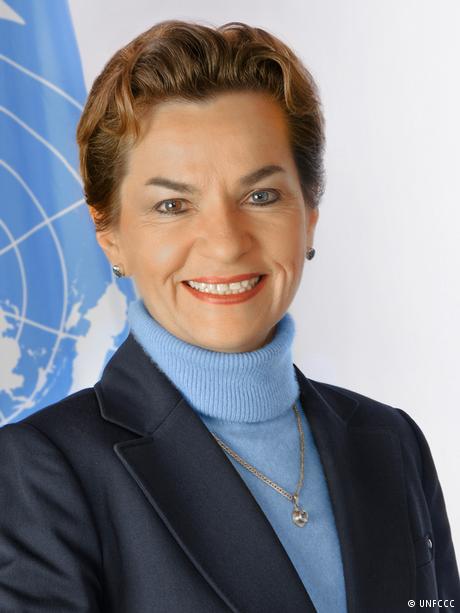


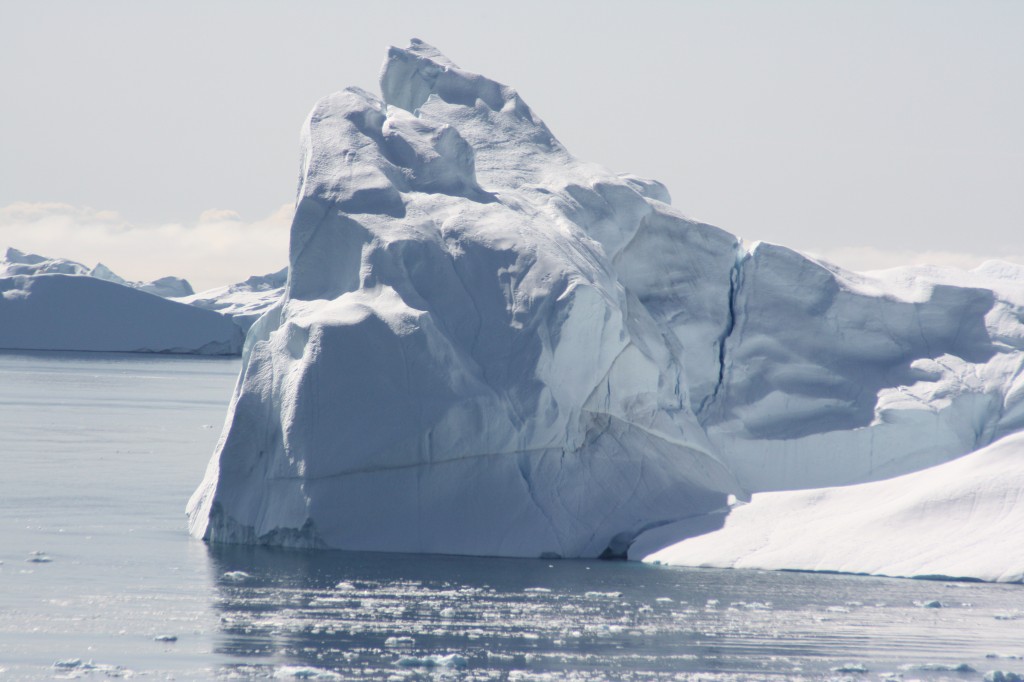
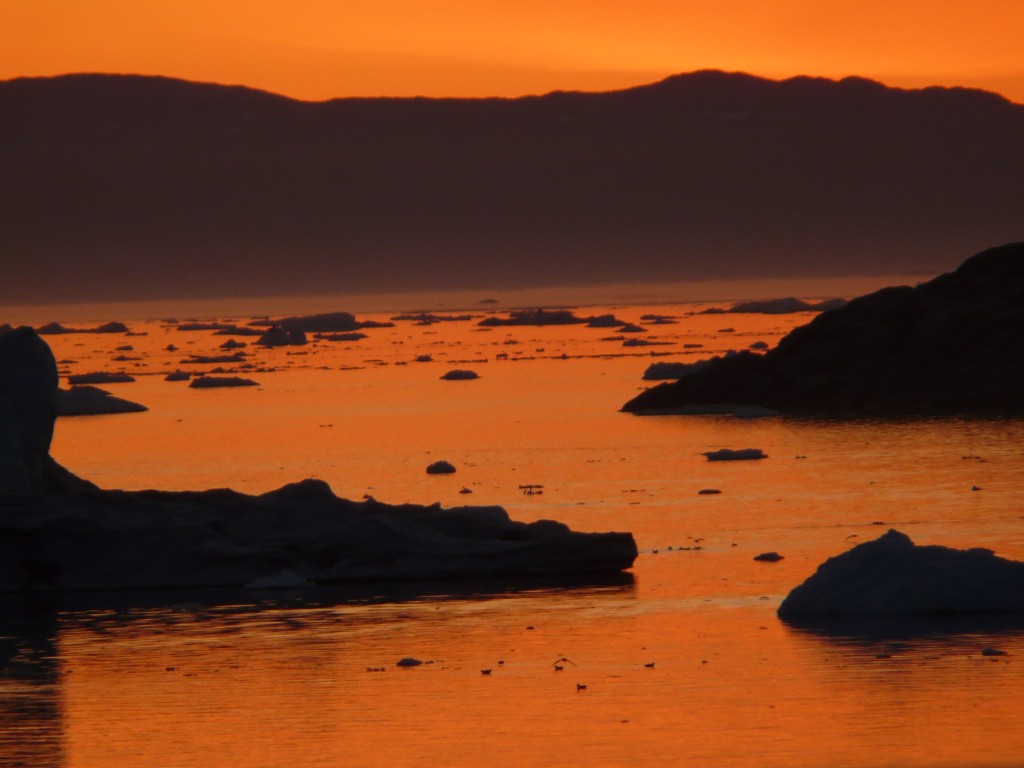
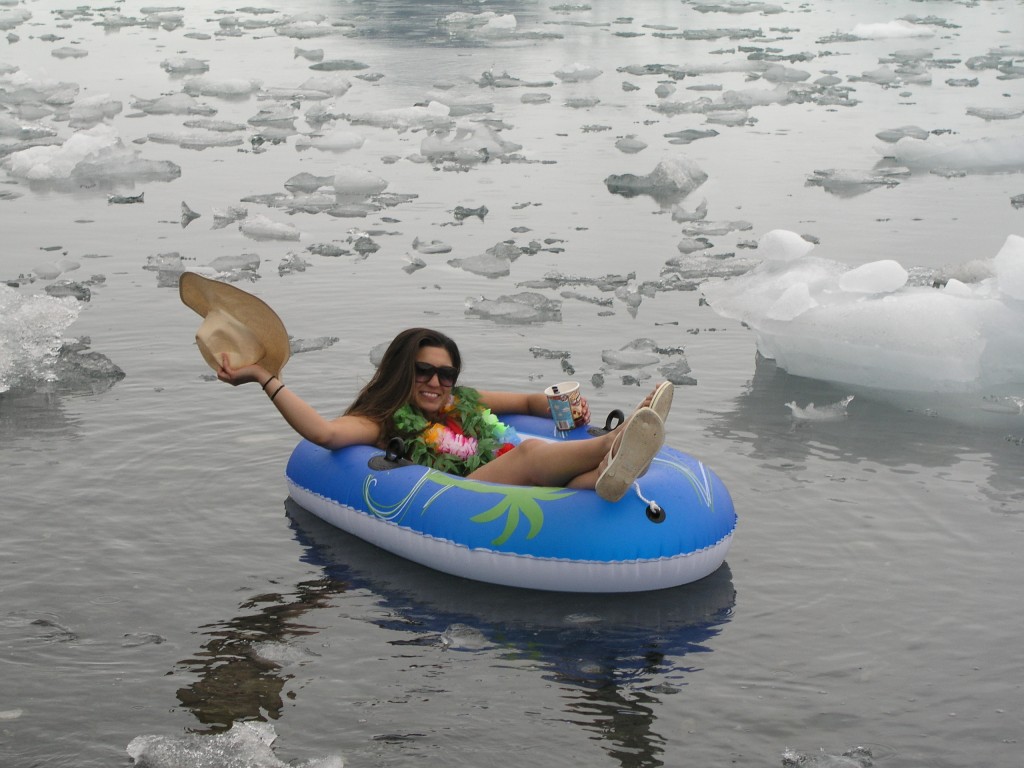
















Feedback